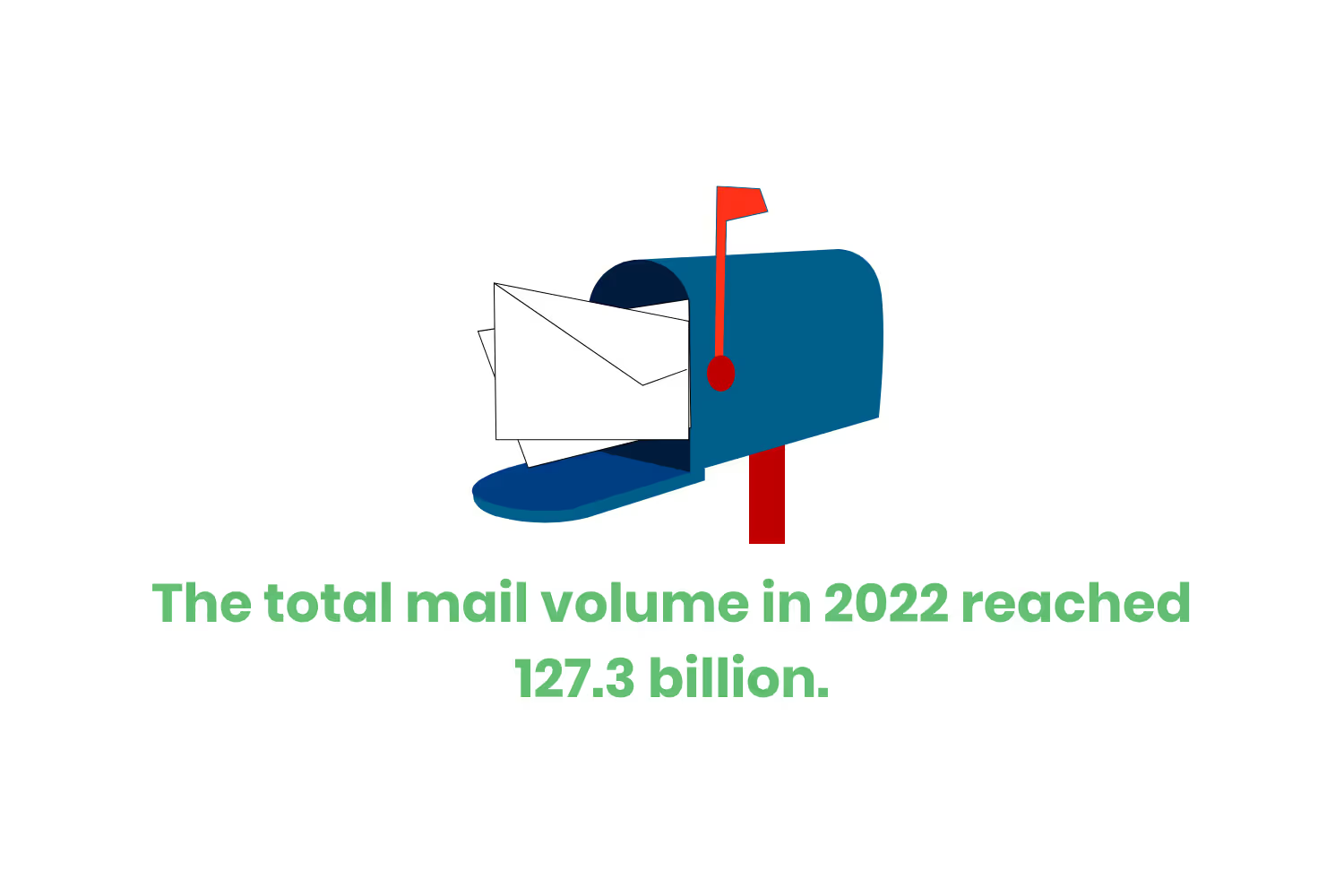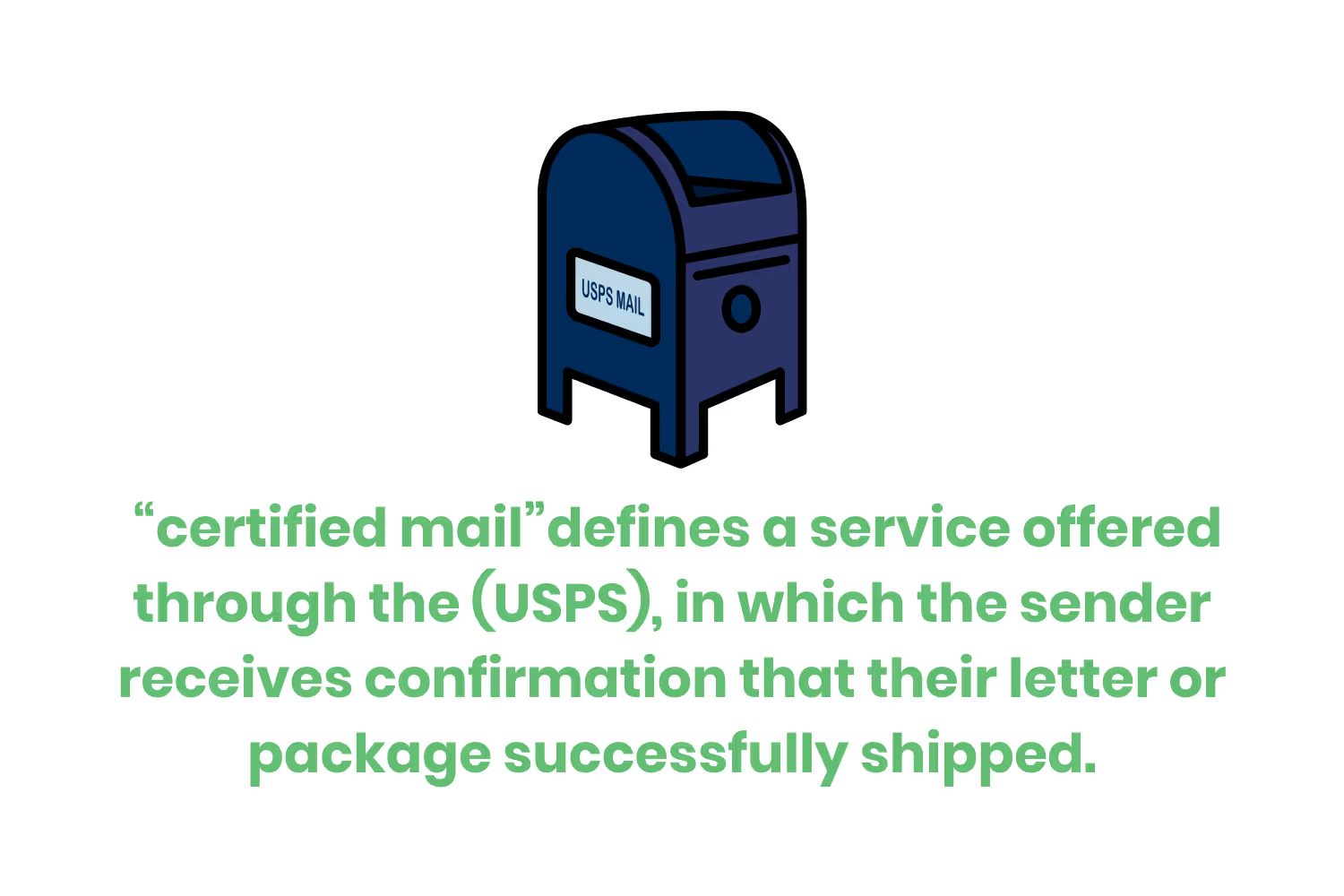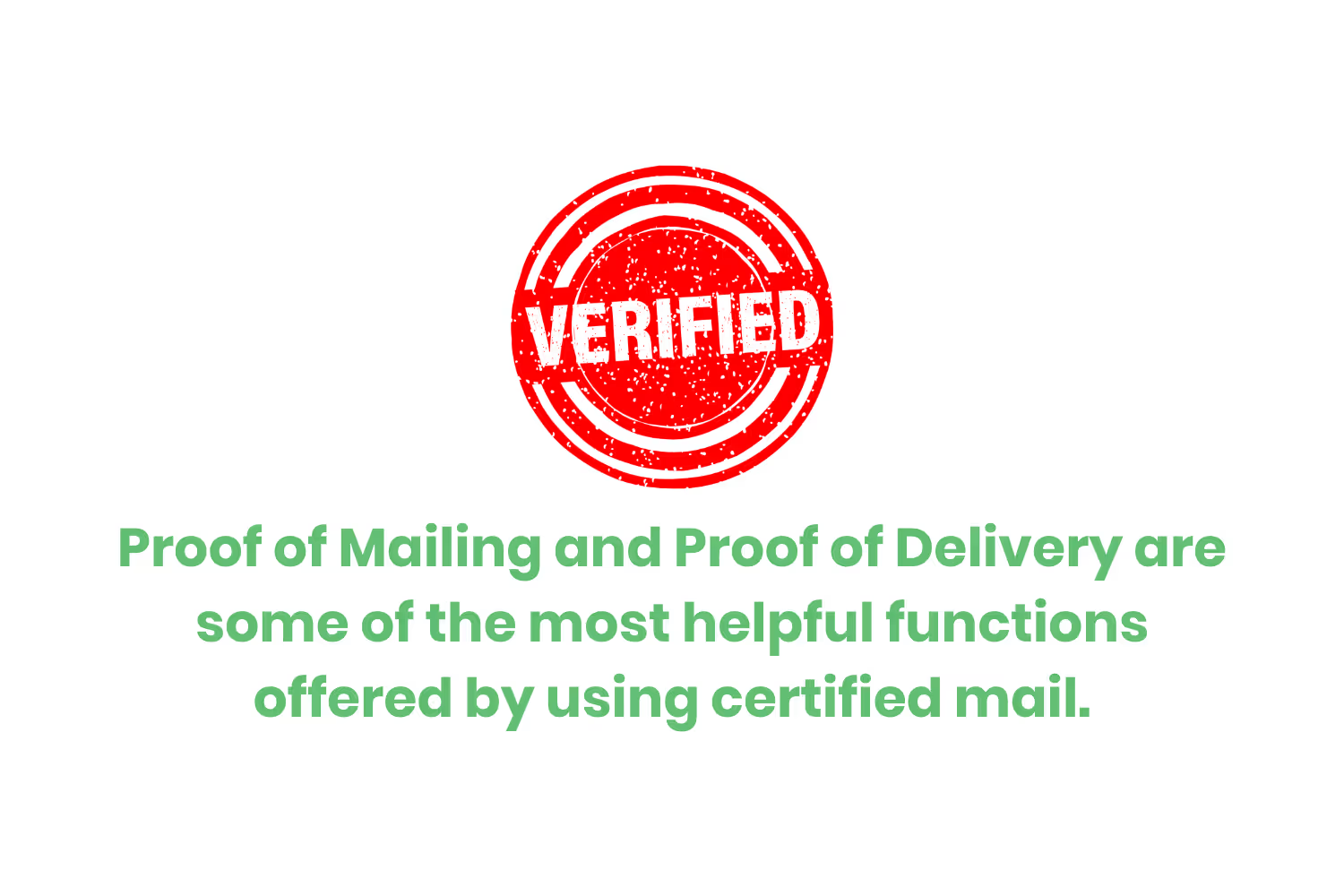[ANSWERED] What is Certified Mail?
In this blog we will be talking about what exactly certified mail is, how it works, and the benefits of it in today’s fast-paced world.

According to the United States Postal Service, the total mail volume in 2022 reached 127.3 billion. Postal mail practices in the United States date back to 1775. In 1787, the U.S. The Constitution solidified the service via the construction of post offices and postal roads. A little bit of a history lesson for you!
Since then, there have been quite a few updates to the practice. We have seen many changes made to the solutions offered by the United States Postal Service, especially through technological advancements.

With the introduction of automation, there is an increase in the efficiency of how our letters and parcels move. We’re able to receive mail faster while tracking its whereabouts all over the world. How do we do this? With the use of certified mail! In this blog we will be talking about what exactly certified mail is, how it works, and the benefits of it in today’s fast-paced world.
What is "Certified Mail"?
When we talk about certified mail, there are a few key points to go over: mailing receipts, electronic verification, and record of delivery. The term “certified mail” itself defines a service offered through the United States Postal Service (USPS), in which the sender receives confirmation that their letter or package successfully shipped. The recipient then gives their signature upon the item’s arrival.
This numbered service is incredibly useful in case a package or letter goes missing, or ends up in the wrong hands. The sender, in this case, has their receipt ready and on hand to refer to when contacting the USPS about the missing piece. This ensures the sender has coverage for any otherwise unseen outcomes or issues.

Certified mail also provides a way for senders to track their delivery in real-time. Electronic verification can show anyone with a shipping receipt whether a letter is on its way to the desired destination. It also notifies the sender of a delivery attempt, which indicates that the courier attempted to deliver the letter or parcel but was unsuccessful for whatever reason.
After all of this, the USPS then maintains a record of delivery. The Post Office stores this document for two years from the date of mailing and includes the recipient’s signature. Certified mail is essential for important items, such as legal documents, compliance paperwork, and notice mailings. Out of everything I went over in this section, electronic delivery is arguably the most useful. Let’s dive a little deeper into this feature in the certified mail delivery process.
Electronic Verification System
As technology continues to evolve, the USPS understands that its practices must continue to evolve as well. One of the newest updates is the implementation of the Electronic Verification System (eVS®). The eVS helps to streamline various aspects of the mail delivery process for parcels, by enabling senders to submit documentation and pay postage. This feature is ideal for companies that mail packages at high-volume rates. By using electronic manifest files, companies can take advantage of destination entry rates as files transmit to the Postal Service™ eVS for storage.

eVS differs from the original manual manifest process by doing the same thing… only electronically. Mind-blowing. Also, the USPS captures sampling data used to monitor postage accuracy after the mailing arrives at the Post Office. Reconciling sample data is now also done against all manifests from the mailer during the month, instead of against individual manifests.
Electronic delivery status is available in three different ways. First, by visiting www.usps.com. Second, by telephone while using the extra service number of the item. Finally, you can retrieve delivery status by bulk electronic file transfer. This is for mailers who provide the USPS with an electronic manifest.
Some key components of electronic verification include the following:
- Intelligent Mail Barcode (IMb) - This barcode is an important element of the electronic verification process. It houses essential information about the letter or parcel. This information includes the destination and the delivery point. Without this information, the likelihood of mail going to the incorrect destination along with other mailing errors rises dramatically.
- Address Verification - This service verifies addresses while ensuring mail arrives at the correct destination promptly. Chances of mail misdelivery and other errors become minimized with this key feature.
- Real-Time Tracking - This is exactly what it sounds like. You can track your parcels and letters in real time with electronic verification! Whether it be through an online platform or mobile application, you can check on the status of your mail and receive updates.
- Enhanced Security - Creating a digital trail for your mail not only allows for tracking but also offers a line of security. You can rest easy knowing that having this digital trail will help deter any tampering or theft that might take place. As well as provide insight in case something does go awry.
Certified Mail Key Functions
Let’s take a look at a few other key functions which serve the certified mail process. One example is the certified mail number associated with the USPS tracking service. You can find this number underneath the barcode of your mail. The 22-digit number usually begins with the number “94” and links your mail with your information. This function makes delivery simple and streamlined for both domestic and international shipping.
This next aspect is helpful for those of you who run a business in the healthcare space. A Label Reference Number allows for the attachment of custom data to a certified mail letter. This data might be information concerning billing codes and client numbers. The reference can fit as many as 256 characters, too. This is often used for long-tail reporting.

Proof of Mailing and Proof of Delivery is next on the list of helpful functions offered by using certified mail. As soon as you create your certified mail label, your tracking data is then activated through proof of mailing. You can then guarantee that your mail will have a more efficient delivery.
Speaking of delivery, proof of delivery is usually on the bottom left corner of a certified mail envelope. The word “DELIVERED” will also exist alongside the:
- Postal facility it went to.
- Zip Code.
- Date and time of delivery.
Note that the signature proof of delivery record is not automatically delivered back to the sender. The service does not include this feature, however, you can request a signature proof at the time of mailing and even afterward. Purchasing a Return Receipt Electronic PDF (before mailing) or a Return Receipt (after mailing) sends you proof of delivery by including the recipient's signature and delivery address.
Legal proof, or evidence of delivery, comes from the following information:
- Signature of recipient.
- Recipient’s address.
- Delivery date.
- So long as attached are the correct fees, postage, and forms, you can mail a certified mail piece with a Return Receipt. You can mail it from home or, office, or drop the letter in a Collection Box.
Why Use Certified Mail?
So why use certified mail? Let me sum it up for you with a few key points. You work with a single national permit account. This includes all mail sites. There is no permit imprint application fee. You can bypass the traditional mail acceptance/verification process and enter mail directly at Origin or Destination Facilities. You can also work with more flexible mail entry times with FAST appointments.
The largest benefit has to be the peace of mind of knowing your mail has an extra layer of security attached to it. Whether the mail consists of legal documentation, business correspondence, or personal information, being able to prove that the recipient received the documents is crucial for legal validity.

Conclusion
Certified mail’s evolution along with today’s technology, continues to help aid us in sending and receiving correspondence. We learned a bit about the history of postal services in the United States, while also addressing and looking forward to future endeavors in the industry.
The role certified mail plays currently has assisted with the modernization and growing efficiency of mail delivery. From electronic verification systems to other key certified mail functions, these factors provide a valuable tool for both individuals and businesses alike.
Emphasize your product's unique features or benefits to differentiate it from competitors
In nec dictum adipiscing pharetra enim etiam scelerisque dolor purus ipsum egestas cursus vulputate arcu egestas ut eu sed mollis consectetur mattis pharetra curabitur et maecenas in mattis fames consectetur ipsum quis risus mauris aliquam ornare nisl purus at ipsum nulla accumsan consectetur vestibulum suspendisse aliquam condimentum scelerisque lacinia pellentesque vestibulum condimentum turpis ligula pharetra dictum sapien facilisis sapien at sagittis et cursus congue.
- Pharetra curabitur et maecenas in mattis fames consectetur ipsum quis risus.
- Justo urna nisi auctor consequat consectetur dolor lectus blandit.
- Eget egestas volutpat lacinia vestibulum vitae mattis hendrerit.
- Ornare elit odio tellus orci bibendum dictum id sem congue enim amet diam.
Incorporate statistics or specific numbers to highlight the effectiveness or popularity of your offering
Convallis pellentesque ullamcorper sapien sed tristique fermentum proin amet quam tincidunt feugiat vitae neque quisque odio ut pellentesque ac mauris eget lectus. Pretium arcu turpis lacus sapien sit at eu sapien duis magna nunc nibh nam non ut nibh ultrices ultrices elementum egestas enim nisl sed cursus pellentesque sit dignissim enim euismod sit et convallis sed pelis viverra quam at nisl sit pharetra enim nisl nec vestibulum posuere in volutpat sed blandit neque risus.

Use time-sensitive language to encourage immediate action, such as "Limited Time Offer
Feugiat vitae neque quisque odio ut pellentesque ac mauris eget lectus. Pretium arcu turpis lacus sapien sit at eu sapien duis magna nunc nibh nam non ut nibh ultrices ultrices elementum egestas enim nisl sed cursus pellentesque sit dignissim enim euismod sit et convallis sed pelis viverra quam at nisl sit pharetra enim nisl nec vestibulum posuere in volutpat sed blandit neque risus.
- Pharetra curabitur et maecenas in mattis fames consectetur ipsum quis risus.
- Justo urna nisi auctor consequat consectetur dolor lectus blandit.
- Eget egestas volutpat lacinia vestibulum vitae mattis hendrerit.
- Ornare elit odio tellus orci bibendum dictum id sem congue enim amet diam.
Address customer pain points directly by showing how your product solves their problems
Feugiat vitae neque quisque odio ut pellentesque ac mauris eget lectus. Pretium arcu turpis lacus sapien sit at eu sapien duis magna nunc nibh nam non ut nibh ultrices ultrices elementum egestas enim nisl sed cursus pellentesque sit dignissim enim euismod sit et convallis sed pelis viverra quam at nisl sit pharetra enim nisl nec vestibulum posuere in volutpat sed blandit neque risus.
Vel etiam vel amet aenean eget in habitasse nunc duis tellus sem turpis risus aliquam ac volutpat tellus eu faucibus ullamcorper.
Tailor titles to your ideal customer segment using phrases like "Designed for Busy Professionals
Sed pretium id nibh id sit felis vitae volutpat volutpat adipiscing at sodales neque lectus mi phasellus commodo at elit suspendisse ornare faucibus lectus purus viverra in nec aliquet commodo et sed sed nisi tempor mi pellentesque arcu viverra pretium duis enim vulputate dignissim etiam ultrices vitae neque urna proin nibh diam turpis augue lacus.



![[ANSWERED] What is a Long-Term Care (LTC) Pharmacy](https://cdn.prod.website-files.com/67e2b8210878abcba6f91ae6/68d687806a075a1cf64659b0_WhatisLongTermCarePharmacy_925.avif)
